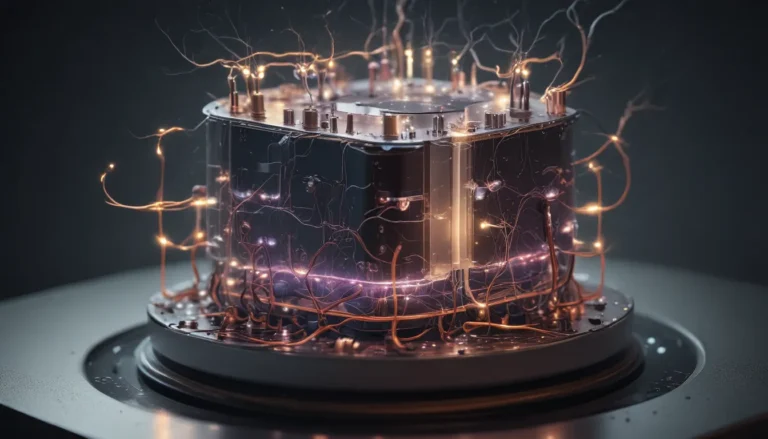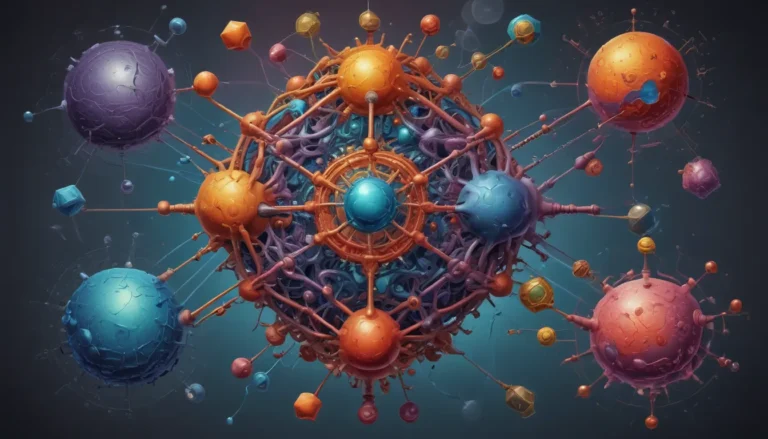A Note About Images: The images used in our articles are for illustration purposes only and may not exactly match the content. They are meant to engage readers, but the text should be relied upon for accurate information.
The piezoelectric effect is a captivating phenomenon that has transformed various scientific and technological fields. This effect involves certain materials generating an electric charge in response to mechanical pressure or stress, making it a crucial property with applications in medical devices, energy harvesting, sensors, and more. Let’s delve into the intriguing world of the piezoelectric effect, uncovering 17 unbelievable facts that highlight its principles, historical significance, and exciting applications.
Understanding the Piezoelectric Effect
In 1880, the Curie brothers, Pierre and Jacques Curie, first observed the piezoelectric effect. They discovered that specific crystals, like quartz and tourmaline, can generate an electric charge when subjected to mechanical stress. This unique property paved the way for the development of various technologies that benefit from the piezoelectric effect.
Everyday Applications of Piezoelectricity
Piezoelectricity can be found in a wide range of everyday devices, from piezoelectric lighters to ultrasonic devices, quartz watches, and even electric guitars. These devices leverage the ability of certain materials to convert mechanical energy into electrical energy, showcasing the versatility and practicality of the piezoelectric effect.
The Phenomenon Explained
When mechanical stress is applied to a piezoelectric material, it causes charges within the crystal lattice structure to displace, resulting in the generation of an electric potential difference across the material. This process demonstrates the conversion of mechanical energy into electrical energy, highlighting the fundamental principle of the piezoelectric effect.
Significant Role in Medical Technology
The piezoelectric effect plays a vital role in medical ultrasound technology. Ultrasound devices utilize piezoelectric crystals that vibrate when an electric charge is applied, generating sound waves used to create images of internal body structures. This application underscores the impact of piezoelectricity in advancing healthcare practices.
Energy Harvesting Potential
One remarkable aspect of the piezoelectric effect is its ability to convert mechanical energy, such as vibrations or pressure, into electrical energy. This capability opens doors for the development of energy harvesting technologies that can generate electricity from everyday sources like footstep vibrations or vehicle movement.
Expanding Horizons in Scientific Research
The piezoelectric effect continues to inspire scientific research, driving exploration into new materials and applications to harness its power further. Researchers are continuously uncovering innovative ways to utilize piezoelectricity, expanding its range of applications and potential impact on various industries.
Piezoelectric Actuators and Sensors
Piezoelectric sensors play a crucial role in engineering applications, offering precise measurements of pressure, force, acceleration, and vibration. These sensors find extensive use in aerospace, automotive, and medical industries, showcasing the broad utility of piezoelectric materials in diverse fields.
Crucial Role in Energy Storage and Harvesting
Piezoelectric materials are instrumental in energy storage technologies, enabling the conversion of mechanical energy into electrical energy for further use or storage. Devices like piezoelectric generators and transformers capitalize on this capability, contributing to advancements in sustainable power sources.
Environmental Monitoring with Piezoelectric Sensors
Piezoelectric sensors are essential components of environmental monitoring systems, measuring parameters such as air pollution, water quality, and seismic activity. These sensors provide valuable data for environmental studies and analysis, aiding in the preservation and protection of our natural resources.
Reversible Nature of Piezoelectricity
The piezoelectric effect works both ways, allowing for the reversal of its properties. While mechanical stress can generate electrical charges in piezoelectric materials, the reverse is also possible. An applied electric field can induce mechanical deformation in the material, showcasing the versatility of this phenomenon.
Exploring Unique Crystals and Structures
The crystal structures of piezoelectric materials are crucial for their electrical charge generation and restoration during the piezoelectric effect. These unique crystal arrangements contribute to the materials’ distinct properties and applications, highlighting the importance of crystallography in understanding piezoelectric behavior.
Harnessing Precision Control Systems
Piezoelectric actuators are integral components of precision control systems, offering high accuracy and rapid response times in applications such as micro-positioning devices, robotics, and nanopositioning systems. These actuators enable precise movements and adjustments, enhancing the efficiency of various technologies.
Unveiling Biological Piezoelectricity
Beyond inorganic materials, certain biological substances like bone, collagen, and DNA exhibit piezoelectric properties, contributing to various biological functions. This discovery broadens the scope of piezoelectricity, highlighting its presence in natural systems and its potential implications for biological research.
Overcoming Temperature Dependencies
Temperature variations can impact the performance and efficiency of piezoelectric materials, affecting their suitability for specific applications. Managing temperature control becomes essential in optimizing the functionality of piezoelectric devices, ensuring consistent and reliable operation.
Safety Considerations with Piezoelectric Devices
While piezoelectric devices are generally safe to use, precautions should be taken to avoid excessive force or overload, which can lead to damage or failure. Understanding the limitations and operating parameters of piezoelectric technologies is crucial for their safe and effective utilization.
Ongoing Exploration and Innovation
The 17 unbelievable facts about the piezoelectric effect underscore its remarkable nature and transformative potential. From its foundational discovery to its wide-ranging applications in modern technology, piezoelectricity continues to captivate researchers and engineers through its unique properties and versatile applications. Its ongoing exploration and innovation promise further advancements in diverse fields, shaping the future of scientific research and technological development.
Conclusion
In conclusion, the piezoelectric effect stands as a captivating scientific phenomenon with profound implications for various industries and technologies. From its inception in the 19th century to its contemporary applications in energy harvesting and precision control systems, piezoelectricity has reshaped our understanding of energy conversion and control mechanisms. Embracing the versatility and utility of piezoelectric materials propels us towards sustainable energy solutions and technological advancements that benefit society as a whole. As we unravel the mysteries of the piezoelectric effect, we embark on a journey of discovery and innovation, paving the way for a future illuminated by the remarkable potential of this extraordinary phenomenon.
FAQs
-
What is the piezoelectric effect?
The piezoelectric effect refers to the ability of certain materials to generate an electric charge when subjected to mechanical stress. -
How does the piezoelectric effect work?
When a piezoelectric material is compressed or deformed, it causes the material’s positive and negative charges to separate, leading to the generation of electrical voltage. -
What are some practical applications of the piezoelectric effect?
The piezoelectric effect finds applications in sensors, transducers, actuators, ultrasound technology, energy harvesting, and musical instruments, showcasing its diverse range of uses. -
Can piezoelectric materials be used to generate electricity?
Yes, piezoelectric materials can convert mechanical energy into electrical energy, making them suitable for energy harvesting applications. -
Are there any limitations to the piezoelectric effect?
Temperature dependencies and material costs are some limitations of the piezoelectric effect, requiring careful consideration in applications and research. -
Can the piezoelectric effect be reversed?
Yes, the piezoelectric effect is reversible, allowing for the conversion of electrical energy into mechanical deformation in piezoelectric materials. -
Are there any safety considerations when using piezoelectric devices?
While generally safe, avoiding excessive force or overload is essential when using piezoelectric devices to prevent damage or operational issues.
Exploring the vast landscape of piezoelectricity reveals a world of innovative technologies, groundbreaking discoveries, and limitless possibilities. Let’s continue unraveling the mysteries of this extraordinary phenomenon and embrace the transformative power of the piezoelectric effect in shaping our future.






